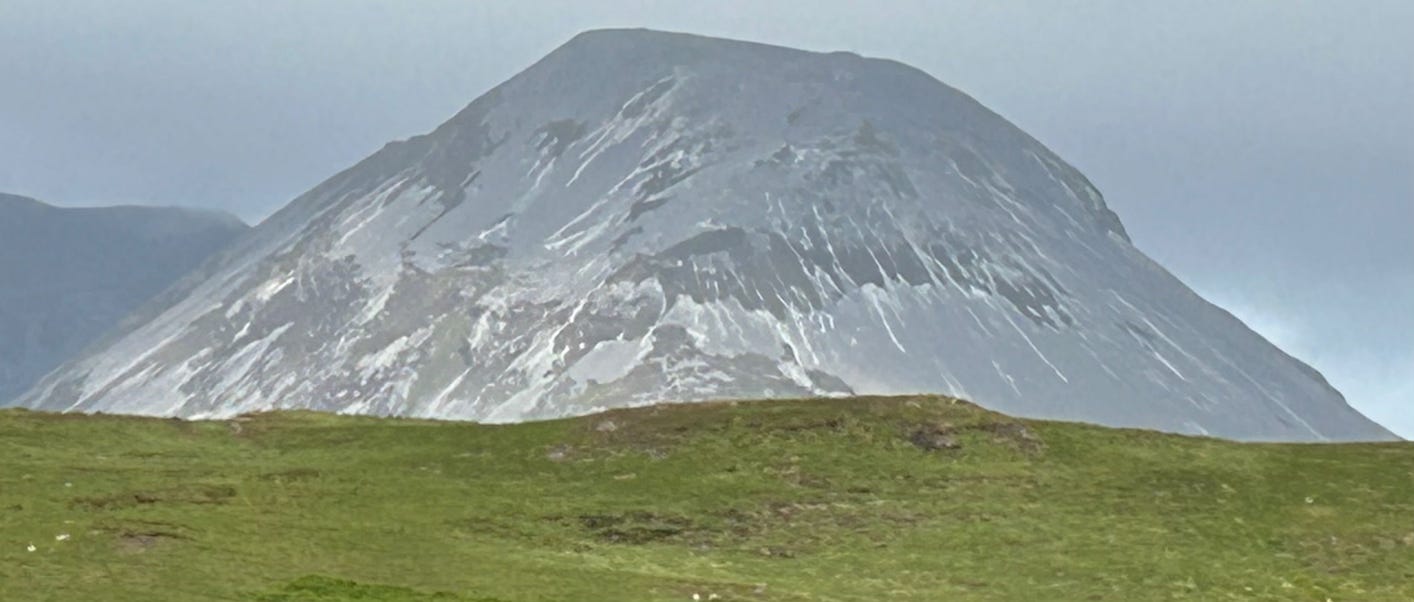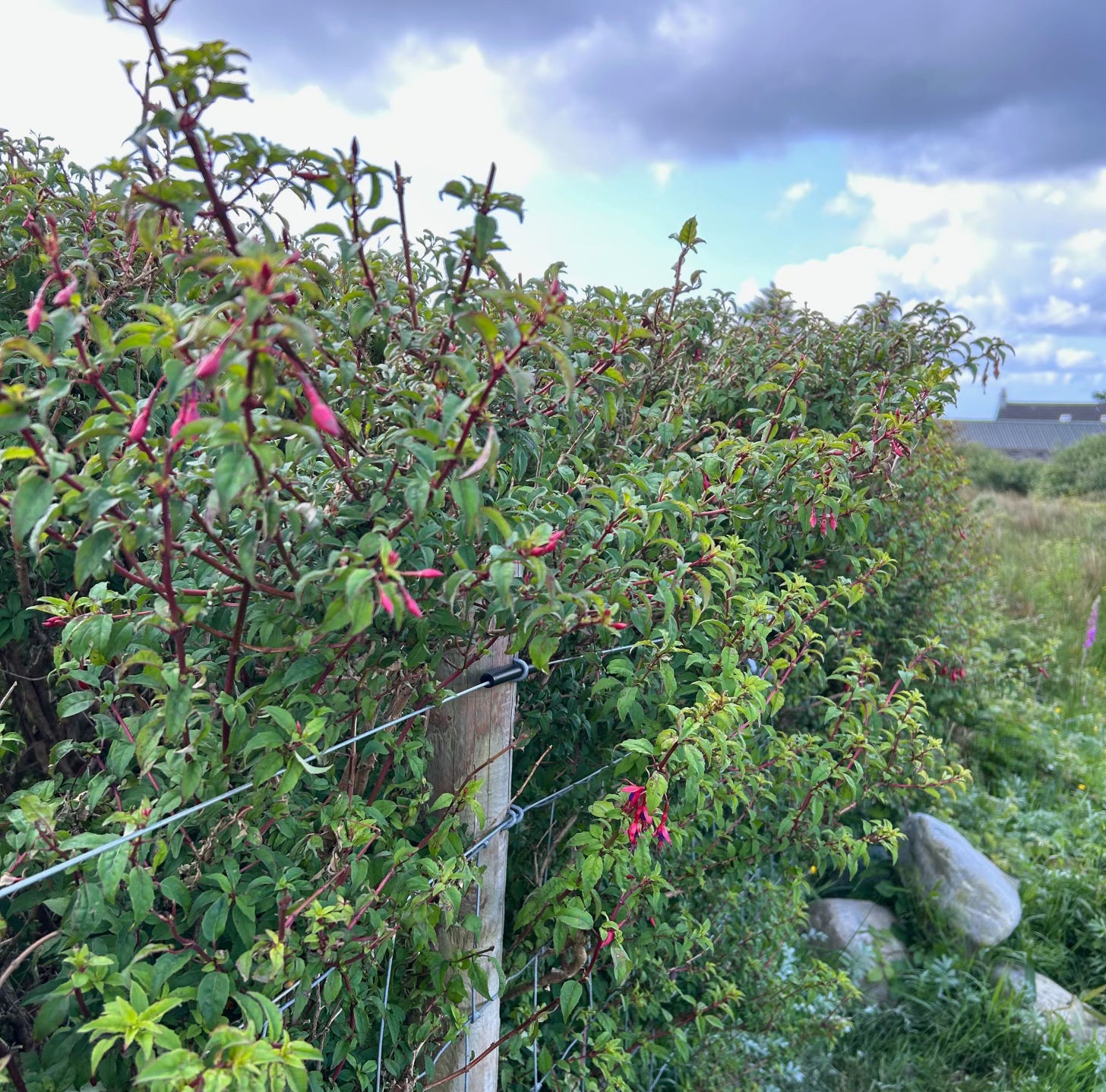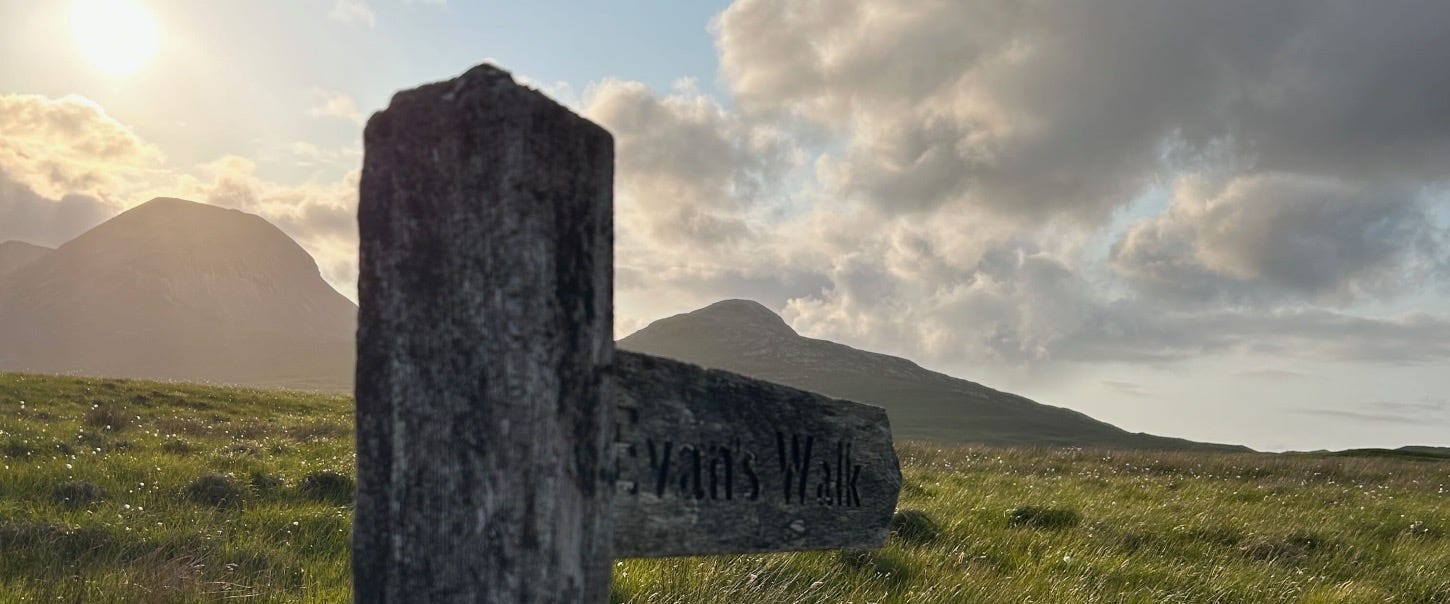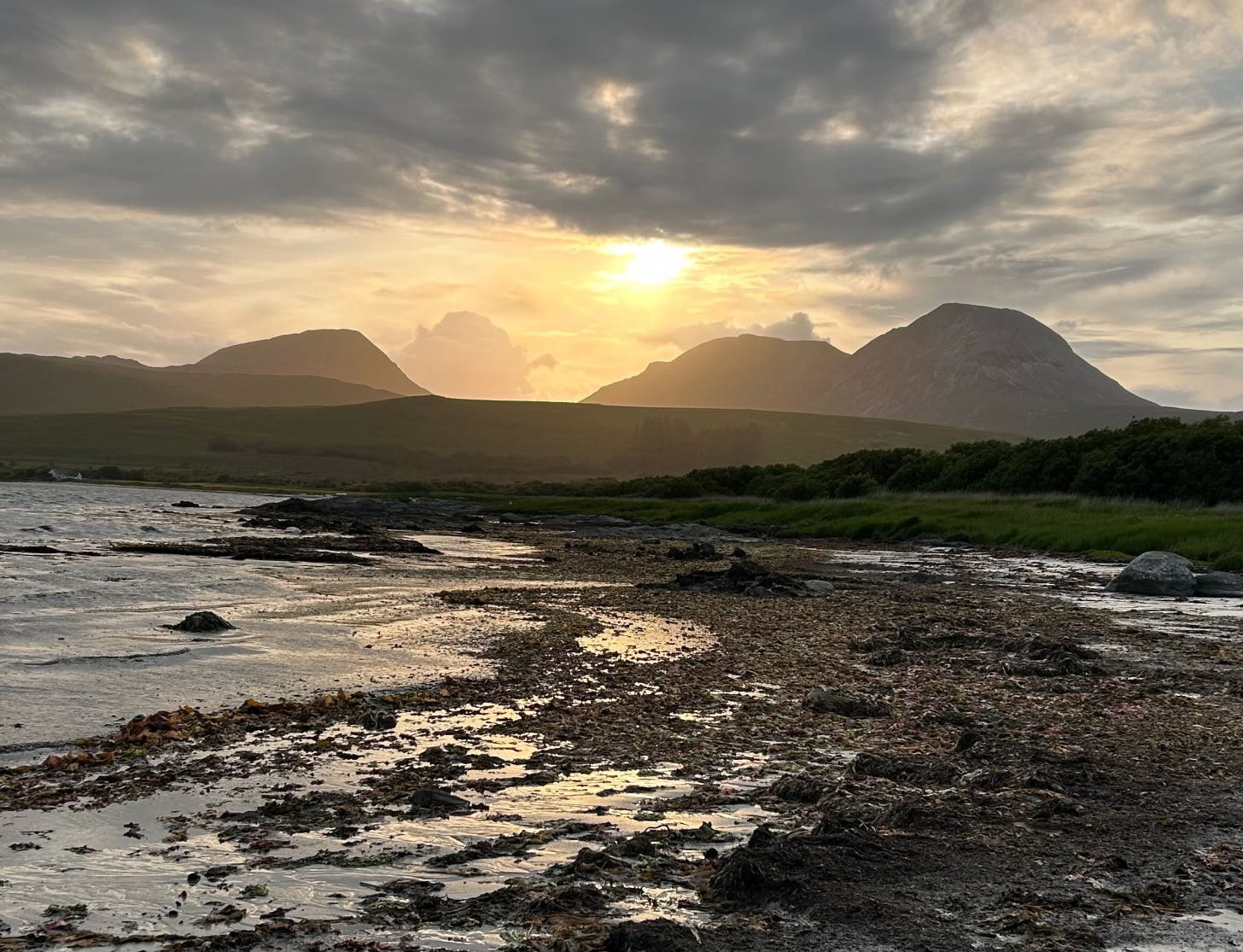Discovering Jura in the Inner Hebrides - a Scottish island wilderness
Is this a land that time forgot?
In an island reputed for wilderness, wildlife, geology and landscape what would I find as a plant lover? In this post I tell of our recent visit to the Isle of Jura (Diùra is the Gaelic name), offering a remote location, yet just 100 miles from Glasgow as the crow flies. Here I look at the local flora and wildlife and other highlights. This was a long-planned road trip from our home in Devon, our original incentive being to visit the location where George Orwell wrote his influential book Nineteen Eighty-Four. I was curious to see what such a distant place could offer by way of biodiversity and resilience.
The Isle of Jura
The island of Jura has a geology based on quartzite, a very hard material underlying much of the blanket bog and wet heath. Yet it has long been settled and fought over. Originally settled in the Mesolithic Period, later occupied by Gaelic people from Ireland, then invaded by Vikings and ruled by Norway until independence and rule by various Scottish clans. Ultimately the land was sold off in parcels by the Campbells and, to this day, is largely managed as seven estates. Now, Jura is part of Argyll and Bute, and some 200 residents live along with 142 square miles of mostly mountainous bog.
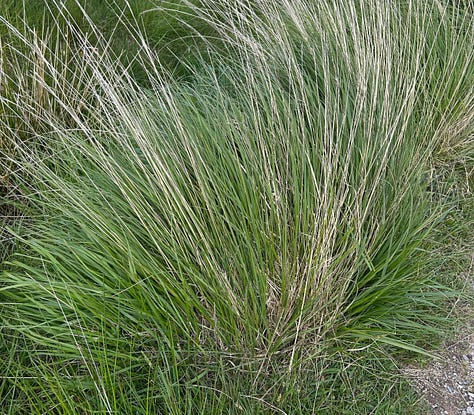
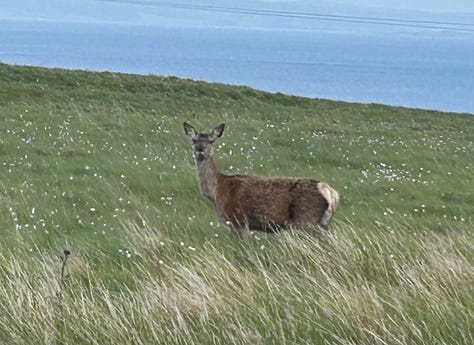
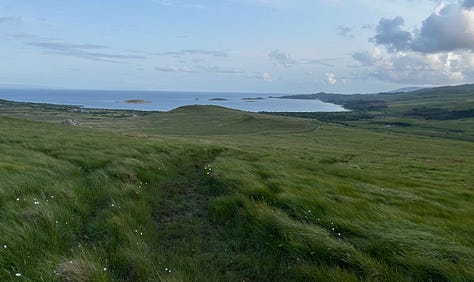
The island is about 30 miles long and has one public road, with occasional tracks leading off for forestry and farming. These tracks are often private and are not readily accessible without an all-terrain vehicle. The scenery is dramatic with three distinctive mountains known as the Paps providing ever-changing profiles. And there are plenty of picturesque coastal bays interspersed with settlements. The island is dotted all around with red deer, over 5000 are present and, as I will explain, these are important to the island economy. The whole western edge is a Site of Special Scientific Interest (SSSI) demonstrating the coastal evolution of Scotland. It has raised shingle beaches and terraces, rock platforms and cliff features including a rare type of coastal meadow called machair, a fertile grassland rich in summer flora (Webster, 2025).
Plants of Jura
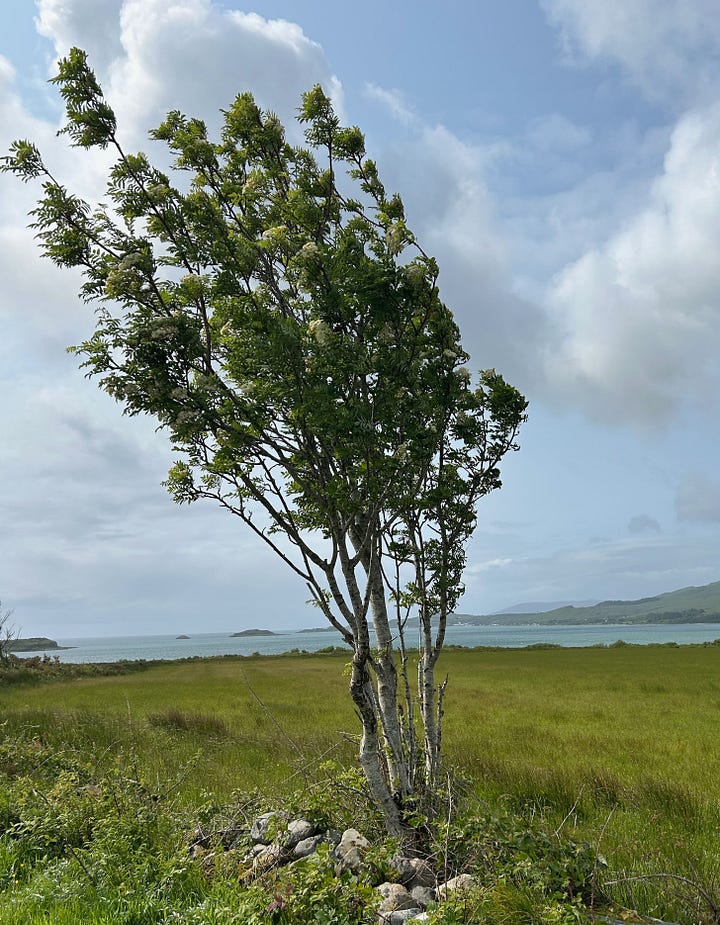
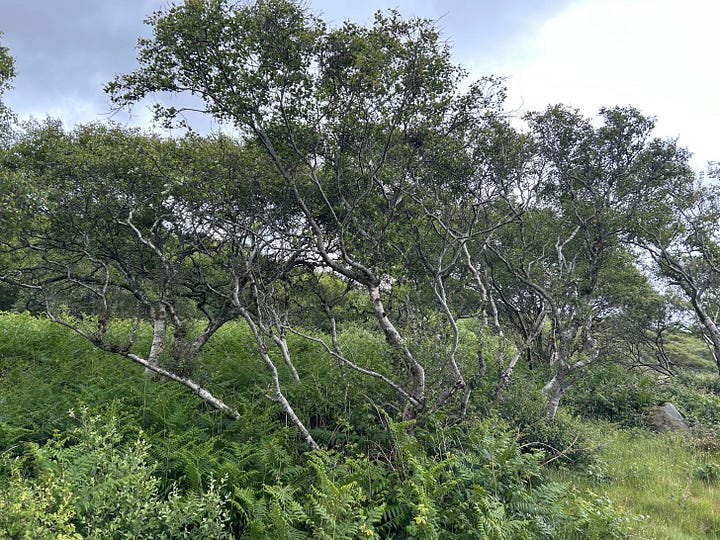
In many parts of the island along the coast road there are native trees to be seen including oak, ash, alder, hazel, hawthorn, rowan, silver birch, sycamore and willows. The nibbling of deer prevents regrowth of most trees on open land except where there are walls or fences on the eastern side and there are also introduced trees planted in some gardens. Surviving trees show that wind is a considerable challenge too.
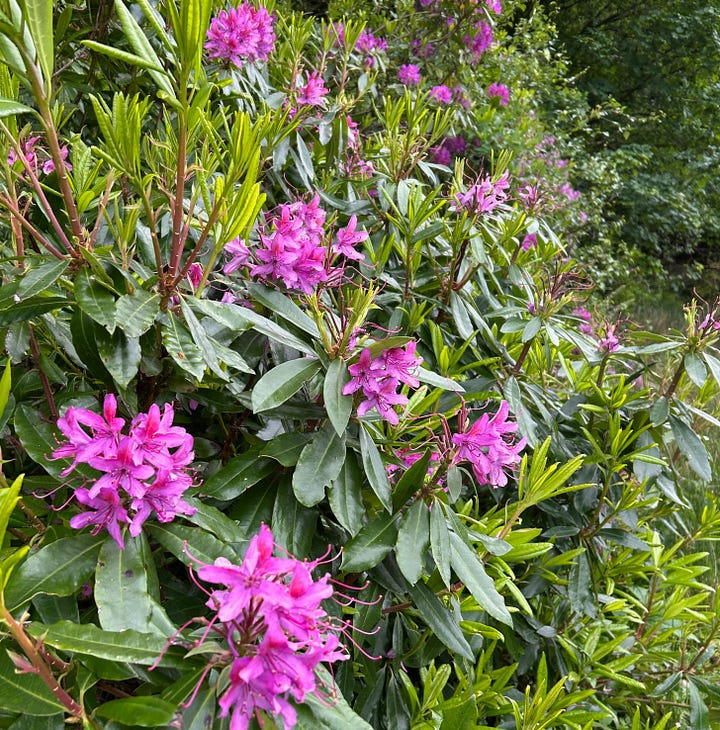
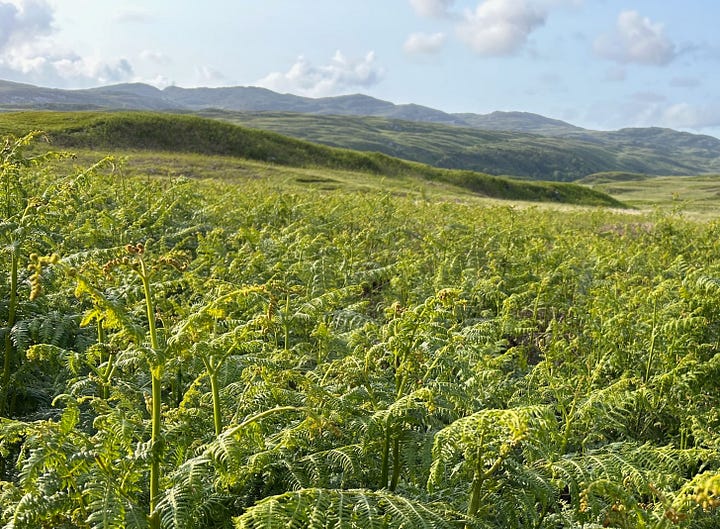
There is plenty of plant life (Morton, 1959). Some invasive species are evident including rhododendron and bracken, and some knotweed by the coast. On richer soil on basalt outcrops there is more plant diversity though the remaining land is largely bare boggy moor. There is an extensive range of mosses and liverworts.
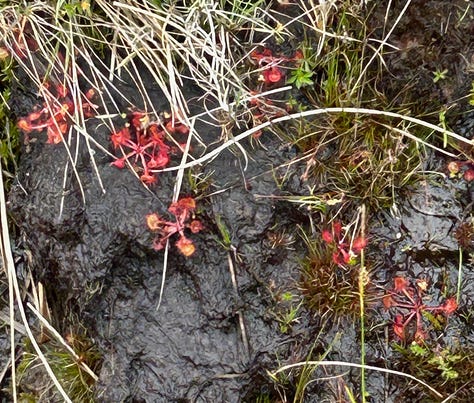
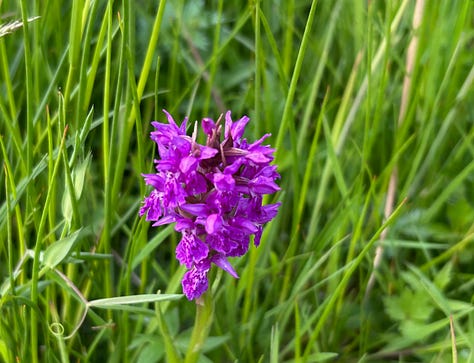
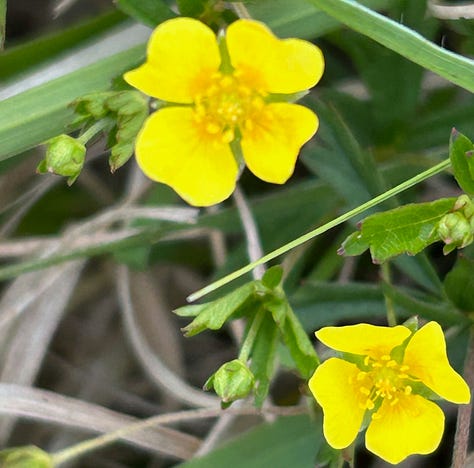
Some plants enjoy the poor terrain. The sundews (Drosera species) gain extra nutrients from insects trapped in sticky drops. Sundews seen alongside the road grow well on the layer of peat overlying much of the island rock. These plants have traditional uses for a range of coughs and lung complaints, but in the wild are protected from harvest. In addition, orchids flourish here. Many familiar moorland plants can also be found such as tormentil (Potentilla species). This is another traditionally used plant, it has astringent effects for stomach complaints and diarrhoea. Within protected areas with shelter and fencing there are many more garden plants possible.
The mild climate allows plants like the hardy fuchsia (Fuchsia magellanica), originally from South America, to live here in a hedge in the garden of Mrs Leonards Cottage where we stayed.
Wildlife on Jura
I found that everywhere I went I needed my binoculars in hand! Around 70% of Jura is designated as a wild land area (WLA) by NatureScot (previously Scottish Natural Heritage). This covers most of the western part of the island, leaving the coastal strip to the east and south as inhabited areas. The remoteness of Jura allows a substantial wildlife population to flourish with deer, goats, otters, hares and seals and many can be readily seen by visitors. Seals bask on rocks along the coastline, and otters often frequent this area too. Large birds of prey, golden and sea eagles, breed on Jura and neighbouring islands along with buzzards and harriers. Getting into the wilder parts, however, was challenging! The boggy areas are hard to negotiate with tussocks of grasses and undefined gaps between, so every step must be cautious. Reaching the east coast is especially difficult due to the lack of paths, although Evans' walk had promise. Around the Paps, this walk leads to Glenbatrick Bay on the remote west coast. We explored the beginning of this walk but did not have time to complete the 11 mile return trip.
Jura is associated with George Orwell
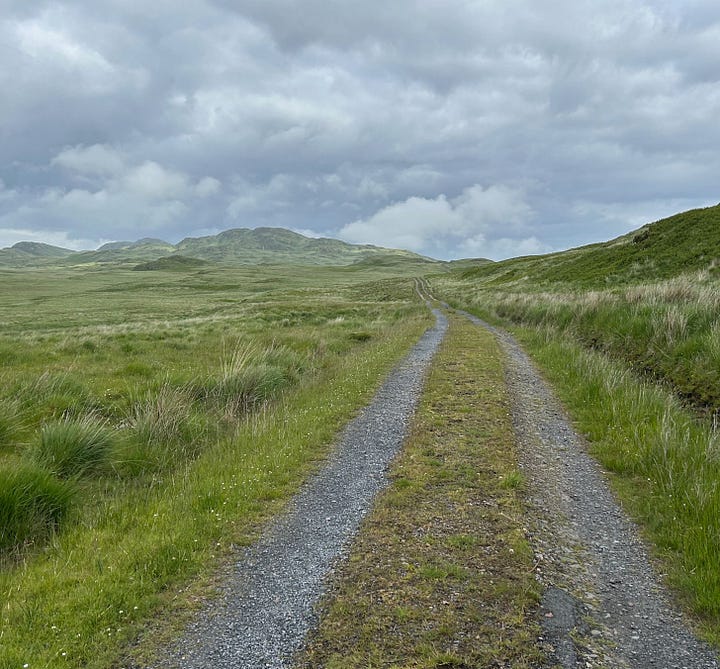
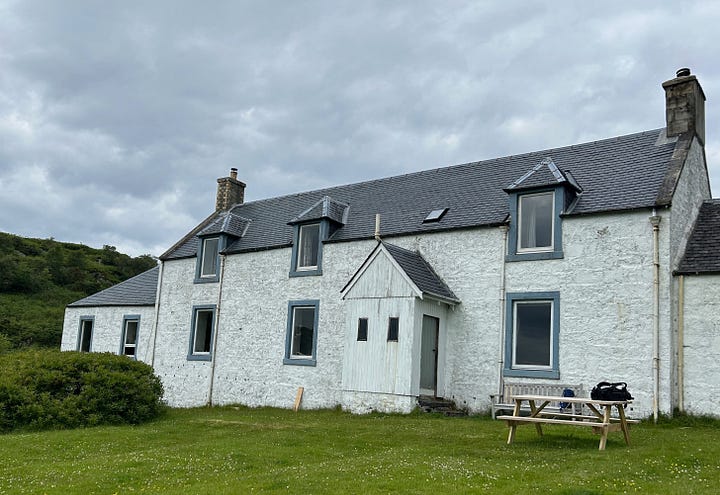
George Orwell (1903-1950), wrote Nineteen Eighty-Four while staying on the Isle of Jura. His real name was Eric Blair and, after his wife Eileen died, he rented Barnhill, a farmhouse on the northern coast between 1946 and 1949. George was accompanied by his adopted son, Richard, the nanny Susan Watson and his sister Avril (Blair, 2012). He eventually completed the novel which was published by Secker and Warburg in 1949 not long before his death. Getting to Barnhill involves a walk of about 4 miles beyond the public road. The house has been little renovated since Orwell left and is not accessible to the public. On our visit there was only our imagination to play with, visualising George (or Eric as his sister insisted on calling him) looking out from an upstairs window as he worked on his tragic love story. His book remains a powerful warning of totalitarianism supported by state propaganda and surveillance, as he intended, and it is depressingly relevant today.
Island economy and resilience
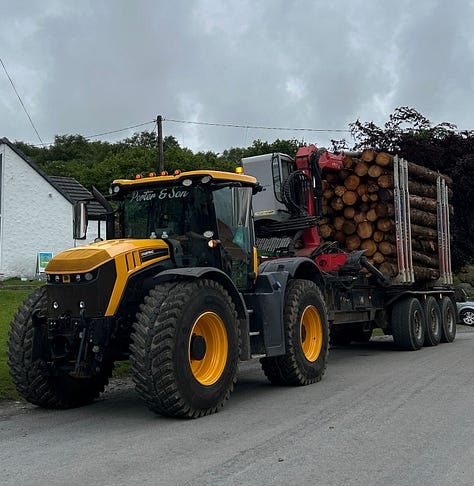
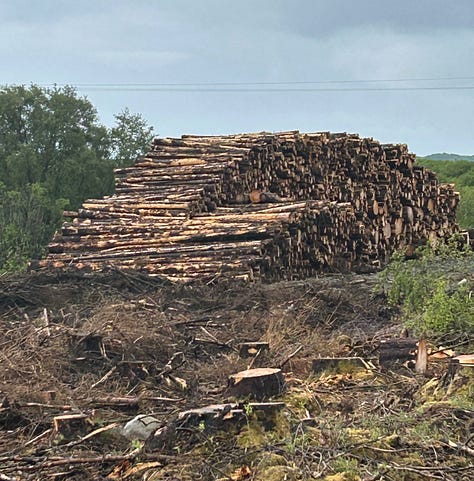
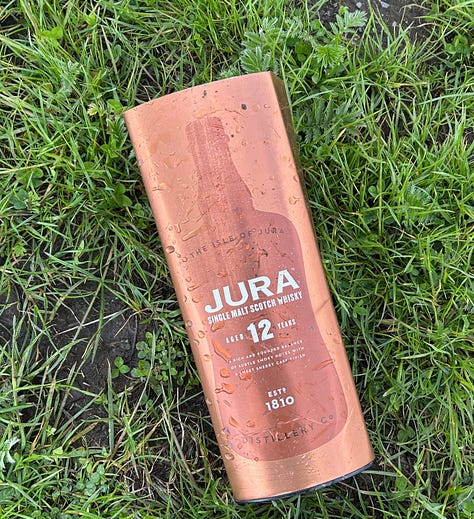
The island is divided up into sizeable estates, only one of which currently has a resident landowner. Jura is dotted along the eastern side with conifer plantations, harvested by the truckload, some destined for use as a biofuel in distilleries. There is interest in further woodland creation although this is challenging due to the free-ranging deer population. Deer management is monitored by the Jura Deer Management Group representing the landowners and other interests, and deer density in the last decade has been recorded around 14 deer per square kilometre. Around 900 deer were culled last year, supporting high-end hunting trips. Schools have benefited from a pilot project supplying venison burgers and meatballs. This was a joint effort with Wild Jura, Argyll and Bute Council and Food for Life Scotland, winning the ‘Best Sustainability Project in the UK at the Public Sector Catering Awards 2025. Other forward-looking projects have included an installation supporting hydro-electric power. Sadly, the Ardfin estate including the Jura House Gardens, a tourist attraction with many introduced species, is now under the ownership of an Australian hedge fund manager. The estate has been refitted as a golf course with a luxurious hotel but access to the gardens is only offered to hotel residents.
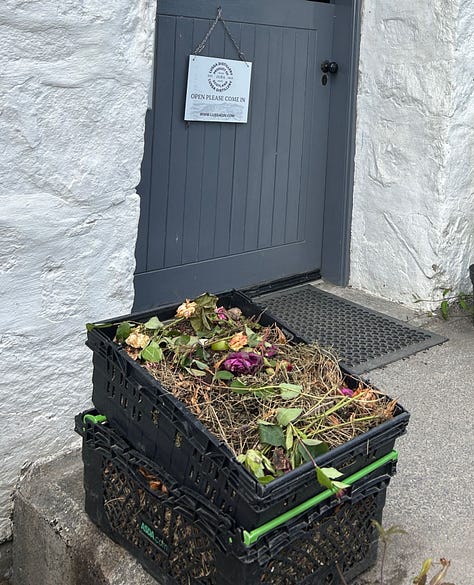
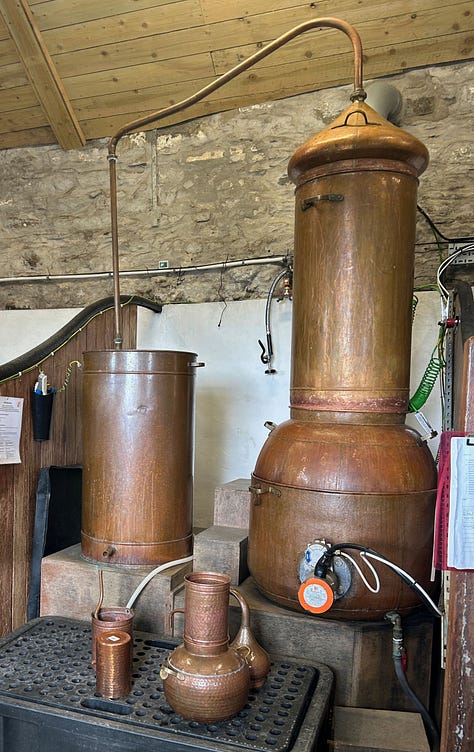

However, the community on Jura have worked together closely and supported various initiatives through the Jura Development Trust, a charitable organisation. There is a community-owned shop and an island bakehouse at Craighouse plus assistance for the passenger ferry and accommodation for small craft businesses. There are a number of distilleries in operation on Jura. The original Isle of Jura Distillery at Craighouse has produced whisky since it was reopened in 1963. Also based nearby is the more recently established Deer Island Rum Distillery. I was keen to visit the Lussa Gin distillery, an established project at Ardlussa started in 2015 by three women aiming to create a botanical gin. They use a traditional 200 litre copper still. Their website offers field notes on the botanicals distilled into small batches of the gin including bog myrtle, coriander, elder, honeysuckle, juniper, lemon balm, lemon thyme, lime flowers, orris root, rose hips, petals, and more. These botanicals are either foraged or grown locally and frozen to preserve their aromatic flavours. The result is an aromatic, award-winning dry gin and other specialities. Their bramble gin liqueur is delicious!
Overview
Jura is a remote Scottish island producing timber, spirits, venison, and more, some on a sustainable basis, and providing facilities for a small number of tourists keen on reaching this remote location We met some of the 200 or so people living on the island who are extremely welcoming and interested in visitors. The geology and climate contribute to a particular range of plants, some rare and many of which we would recognise as herbs and wildflowers but there is limited regeneration due to grazing deer. I find Jura has contradictions, on the one hand there is imaginative use of resources and community initiative, on the other it is plain that the island can be powerfully affected by decisions made far away. I hope that the island can develop more resilience without changing too much. The lightness and landscape of Jura persist in my mind still, some weeks after leaving. It is a wonderful place to visit and explore.
Information about the Isle of Jura
The ‘wee ferry’ to Feolin from Port Askaig on the island of Islay runs about every hour in the day time, and carries about 6 vehicles. To reach the island of Islay there is a car ferry to Port Askaig operated by Caledonian MacBrayne taking around 2 hours from Kennacraig on the Scottish mainland. There are bus connections from Glasgow to the Kennacraig to Port Askaig for foot passengers and there is a local 456 bus service on Jura running to Craighouse and beyond on schooldays. Craighouse is also served by a passenger only ferry from the Scottish mainland at Tayvallich running up to twice daily in summer months. The island of Islay has an airport with Loganair flights from/to Glasgow taking 45 min. Limited availability of ferries and planes means advance booking is essential, so check travel information.
Lussa gin on Jura, distillery tours are bookable online, here..
Hand-crafted rum distillery on Jura at Craighouse contact here..
Accommodation is quite limited on Jura. We stayed with Bothan Jura Retreat in Mrs Leonard's Cottage - a beautifully refurbished cabin bookable here..
The Jura Hotel at Craighouse has accommodation and food..
References
R. Blair. Remembering Jura (2012) available in this archive..
J. Morton. Checklist of wild flowers of Jura and Islay (BSBI, 1959) available here..
D. Webster. A guide to the geology of Jura (Ringwood Publishing, 2025)





